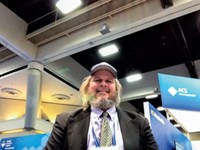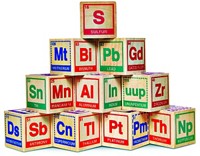Advertisement
Grab your lab coat. Let's get started
Welcome!
Welcome!
Create an account below to get 6 C&EN articles per month, receive newsletters and more - all free.
It seems this is your first time logging in online. Please enter the following information to continue.
As an ACS member you automatically get access to this site. All we need is few more details to create your reading experience.
Not you? Sign in with a different account.
Not you? Sign in with a different account.
ERROR 1
ERROR 1
ERROR 2
ERROR 2
ERROR 2
ERROR 2
ERROR 2
Password and Confirm password must match.
If you have an ACS member number, please enter it here so we can link this account to your membership. (optional)
ERROR 2
ACS values your privacy. By submitting your information, you are gaining access to C&EN and subscribing to our weekly newsletter. We use the information you provide to make your reading experience better, and we will never sell your data to third party members.
Education
Newscripts
Historic launches: A chemstronaut celebrated and Geoffrey Chaucer app-reciated
by Megha Satyanarayana
February 16, 2020
| A version of this story appeared in
Volume 98, Issue 7

A major honor for Major Lawrence
At Newscripts, we pride ourselves on sharing the quirkiest science news with you, but sometimes, we get the honor of sharing the most timely, reverent science news. On Feb. 14, a cargo ship named after Maj. Robert H. Lawrence Jr., the first African American astronaut, was scheduled to head from Virginia to the International Space Station. Lawrence, a chemist, joined the US Air Force after his undergraduate studies at Bradley University. While in the air force, he got his PhD in physical chemistry at the Ohio State University.
In 1967, Lawrence was picked to be part of an intelligence mission in low orbit, but he never made it. He died on a training flight that crashed a few months later.
This month’s cargo drop is part of Northrop Grumman’s contract with NASA; the aerospace company announced the naming of the spacecraft, NG-13, on Martin Luther King Jr. Day. Its cargo includes, among other things, an updated mobile space lab for cell and tissue culturing, a miniature scanning electron microscope, and materials to study bone density and phage therapy.
Brandon McFarlin, a Bradley graduate who earned a scholarship in Lawrence’s honor while studying biochemistry, says that hearing about the spacecraft has been a source of pride and motivation.
“He paved the way for me to follow in his footsteps,” McFarlin told Newscripts during a quick lunch break from PhD studies at the University of Southern California. He’s studying hypertension and kidney disease. “He did this back when it was more difficult.”
At Bradley, the Chemistry and Biochemistry Department celebrated with a party on the original launch date (the flight has been scrubbed a couple of times) in the, yep, you guessed it, Lawrence Lecture Hall. Chemistry professor Dean Campbell told Newscripts before the party that he planned to talk about Lawrence’s life as well as some pertinent chemistry. “I was looking up information on some of the fuels the rocket uses. How often do we get a spacecraft named after a chemist?”
The ‘appe’ maker’s tale

The Canterbury Tales we chemists know
because of the Canon’s Yeoman’s alchemical woe.
These tales of “pilgrymes” on a solemn quest
provide such insight and then such jest.
But as our lives become so tech
for all small things our phones on deck,
there comes the need for novel ways
to learn of Chaucer, the middle days.
So Newscripts shares the first app ye can use
to study the tales wheneveryou choose
by sight, by sound, and even translated
because Middle English is wee bit dated.
Peter Robinson tells the Newscripts crew
that the app is for scholars and schoolkids too,
and the original text you see on your screen
comes from Chaucer’s scribe and is quite pristine.
The Saskatchewan professor says in appification,
university scholars had a profound revelation,
a possible date for a battle fought
by the Knight in the prologue—this debate’s been hot.
And while the “slydinge science” of the Yeoman’s tale
may not be the next they’ll choose to unveil,
Robinson says their options are plenty,
so download to follow the “nyne and twenty.”
Please send comments and suggestions to newscripts@acs.org.
The app can be found by searching "General Prologue in PlayStore or in the App Store. It can also be accessed online: http://www.sd-editions.com/CantApp/GP.




Join the conversation
Contact the reporter
Submit a Letter to the Editor for publication
Engage with us on Twitter